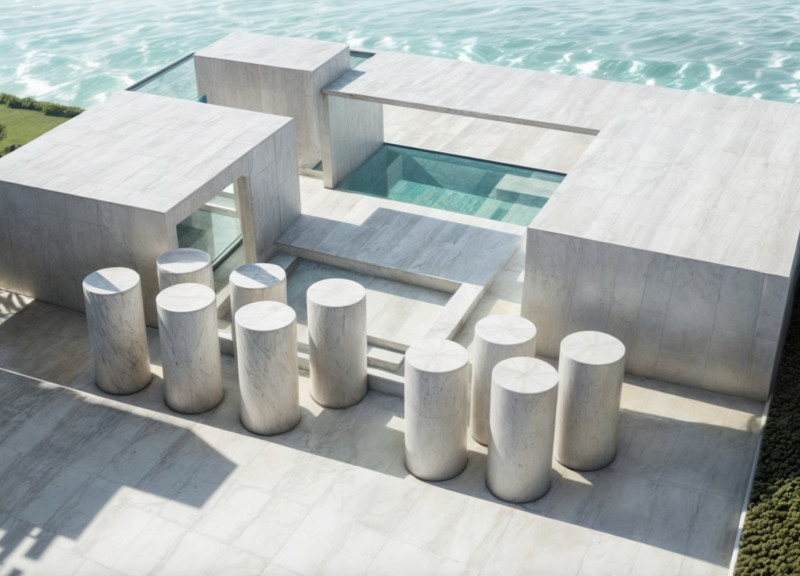5 key facts about this project
At the heart of the design is the intention to serve a multifaceted role—whether it is a cultural space, a residential complex, or a mixed-use development. Each aspect serves its purpose while contributing to the overall narrative of how architecture can facilitate interaction and engagement among its users. The layout promotes fluidity between spaces, allowing for both communal activities and privacy when needed. This duality is evident in the arrangement of rooms, pathways, and communal areas, thoughtfully designed to encourage social interaction without sacrificing personal comfort.
One notable feature of the project is its integration with the natural landscape. The design takes advantage of the site's topography, with strategic placements that maximize natural light and optimize views. Large, strategically placed windows and open spaces allow for a seamless flow of the outside to the inside, reducing the reliance on artificial lighting and enhancing the occupants’ connection to nature. The careful consideration of sightlines and ventilation demonstrates a commitment to creating a sustainable environment, where user well-being is paramount.
Materiality plays a crucial role in the architectural design, with an emphasis on both local materials and sustainable practices. The project utilizes a combination of concrete, timber, glass, and metal to create a tactile and visually interesting façade. Exposed wooden beams evoke a sense of warmth, while the use of glass ensures transparency and visual continuity. Furthermore, the selection of environmentally friendly materials showcases a commitment to reducing the carbon footprint, aligning with modern architectural values of sustainability and responsibility.
Unique design approaches are evident throughout the project’s execution. Organic forms and fluid lines challenge the traditional rigidity commonly associated with architecture. Instead of sharp angles and stark facades, soft curves and flowing shapes create an inviting ambiance that draws people in. This approach not only enhances aesthetic appeal but also supports the project's integrative theme, encouraging movement and interaction within the space.
In addition to its physical attributes, the design concept reflects a deeper understanding of cultural context. It honors the local heritage while pushing forward with a contemporary interpretation. By weaving together community values and innovative ideas, the project serves as a bridge between the past and the future—honoring tradition while also embracing change.
The architectural plans reveal a keen attention to detail, with well-defined sections that communicate the project’s spatial relationships effectively. Architectural designs are rooted in function, ensuring that every square foot serves a purpose. The attention to both public and private zones within the architecture illustrates a nuanced understanding of user experience and spatial dynamics.
Exploring the architectural sections provides further insights into how the project navigates challenges such as light penetration, climate considerations, and sound insulation. These elements are crucial for creating a comfortable environment conducive to the various activities expected to unfold within the space.
As readers delve deeper into this project presentation, they will discover the various architectural ideas that shaped its development. From the innovative use of materials to the intricate interplay of spaces, each element exudes thoughtfulness and intention. This project stands as a testament to modern architectural practice, where the focus extends beyond mere aesthetics to embrace social and environmental responsibilities. Interested readers are encouraged to explore the project further to obtain a comprehensive understanding of its design philosophy and execution.























